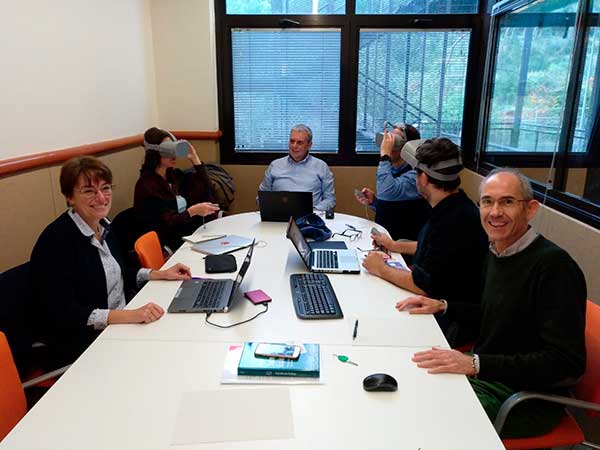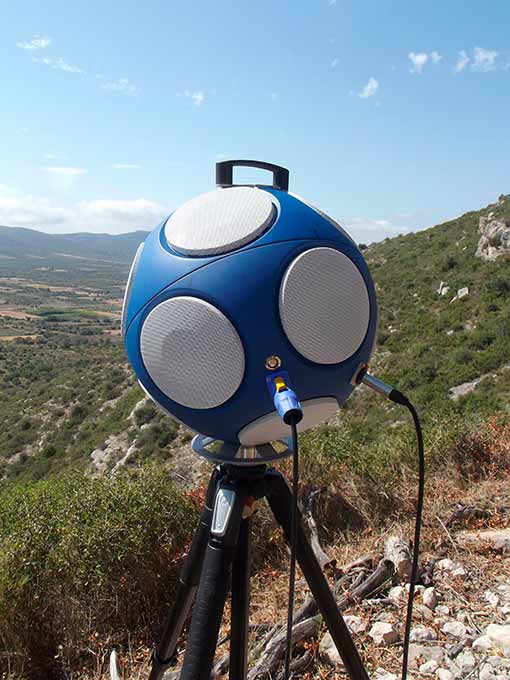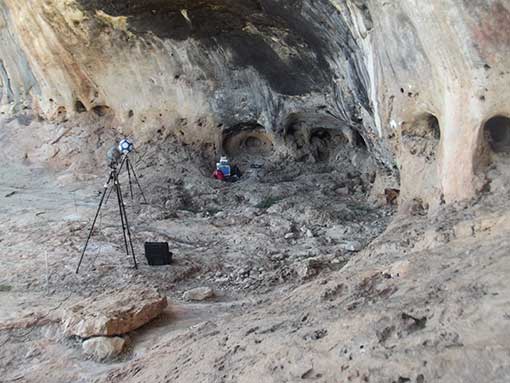By Margarita Díaz-Andreu, Principal Investigator
The ERC Artsoundscapes project started ten months ago, what it seems now like a long time. These past few months have been full of activities including building the team, setting up the project’s communication system – devising a logo, creating a Facebook page and a webpage –, participating in outreach activities, training, strategy development and planning the first fieldwork seasons. The first task for me, as the project principal investigator, was, of course, to form the team. This was not as easy as I was expecting. For the first time of my life I had the funding to build a strong research team but, while at the time of writing the proposal I had a very clear idea of who I wanted in it, one year after some of my best choices had found jobs elsewhere. With the help of Tommaso Mattioli as Senior Researcher, and Carles Escera and Angelo Farina as Senior Scientists, the bulk of the team is now in place. Identifying the young team members matching the expertise the project needed was a daunting task, especially because of the higly interdisciplinary nature of the Artsoundscapes project. Test passed: the team, as it stands now, has researchers from the fields of archaeology, ethnomusicology, anthropology, acoustical engineering, psychoacoustics and neuropsychology. It is exciting to be ready to face the challenges posed by the project’s objectives.
In the first months some key settings had to be put in place: a logo was generated and it was incorporated into the main elements of the project: rock art, sound and landscape. Our webpage was also designed and built, meeting all the requirements of webpages within our university, the University of Barcelona and making sure it was linked to our department’s own webpage. We checked many different options and decided on a simple way of organising the information so that we could present a good summary of our activities. A facebook page was also opened, focusing on providing a more immediate and personal information of what is being done. With webpage and the facebook page we have established the means to transmit the project progress both to the scientific community and to the wider public.
In a group so varied as the Artsoundscapes one it was considered important to introduce everybody in the team to the other fields. This is why a series of reading workshops and seminars was programmed. Reading workshops were prepared by team members, who introduced the rest of the team to an important publication in their field or discussed their work in progress. On a couple of occasions we also used it as a way of providing a good summary of the state of the art in our field. Seminars were given by the Senior Scientists in the team as well as major rock art experts and fieldwork collaborators such as Andrzej Rozwadowski and Tilman Lenssen-Erz. Other speakers were researchers whose expertise in particular areas was relevant to particular aspects of the project, including the acoustics of Roman theatres, medieval churches and music of post-medieval Barcelona, myths and sound among the South African San, animism and musical practices in Khakassia, music and emotion, and situated musicality and phenomenology.
An important event was held in November 2018. On Monday 19 and Tuesday 20 November meetings were held at our section in the Department of History and Archaeology and at the Brainlab, in which our Senior Scientists, Angelo Farina and Carles Escera, met for the first time in person. In these two days the full team of archaeologists, acoustical engineers, psychologists, and anthropologists sat together around the same table. In a series of brainstorming meetings held, many proposals emerged. Some of the developments created in one field were suggested for application in another one. How, for examples, could psychologists benefit from the technical know-how of acoustical engineers?

Interdisciplinary meeting at the BrainLab
To test some of the ideas put forward it was realised that new equipment was needed in the field so that the new data needed could be gathered. This, of course, is easier said than done. Having obtained the necessary permission from the ERC regarding the new equipment we had to overcome the difficult system of ordering items imposed on us by the FBG, the UB foundation that manages the project. Items stuck in customs and slow payments were some of the many challenges that the practical running of any project usually has. One of the major pieces of equipment devised was a 12-channel loudspeaker array that will allow us to simulate how diferent sounds (musical instruments, voices, and so on) behave in the surrounding landscape. Having been built by Aida LLL, the amazing-looking item required a much more delicate handling than expected given the challenging landscape in which we were going to move in the field. A special box and frame to carry it around were then arranged.
The equipment was first tested in the rock art site of Abrics de l’Ermita at Ulldecona (Montsià district, Tarragona), about 200 km south of Barcelona, in June this year. Our collaborator in the field this time was Agustí Vericat. In three crucial days the new process of taking measurements was tested. Using a newly-built system always brings unexpected problems and resolving them took us some time. In the end we were successful in taking some test measurements and it seemed that everything was ready for major fieldwork. Some of the team members were in charge of starting the process of writing up the set of instructions for using the equipment in future fieldwork. We also attended to the press [1] and, basically, had a fantastic time getting to know each other better in a new environment.

The 12-channel loudspeaker

Testing the new equipment in Ulldecona
Having the new equipment ready for use we were prepared for starting a major fieldwork season. Thanks to our Polish colleague, the rock art expert Andrzej Rozwadowski, we were able to count on Elena Miklashevich’s assistance in the field. She works in the Tomskaya Pisanitsa Museum at Kemerovo. On 7 August part of the Artsoundscapes team – Margarita Díaz-Andreu, Tommaso Mattioli, Laura Coltofean, Adriano Farina and the collaboration of Andrzej Rozwadowski and Elliot J. Smith – met with Elena Miklashevich, Leonid Bove and Vasily Blinov at the Gorno Altaisk airport. Soon we were driving along the Katun and the Chuya rivers road, heading south towards Karakol valley and Kosh-Agash…
